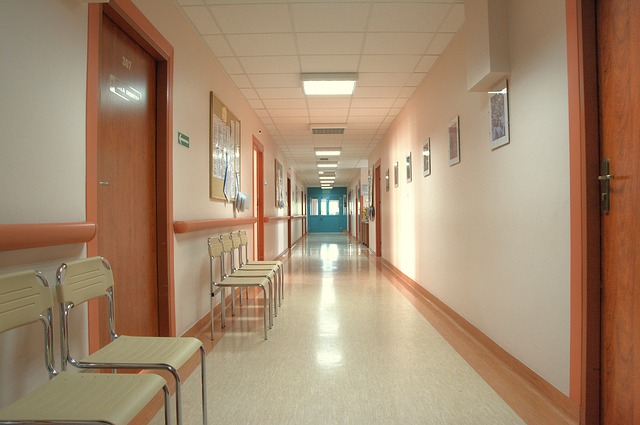Volunteering: A peek behind the hospital curtains
The three year old girl with feathery blond hair sits delicately in her pyjamas as she fiddles with her new bracelet, smiling at the sparkly butterfly beads. She shows me her teddies and I go through them one by one, asking their names and telling her about my own childhood toys. I find her some colouring, Frozen themed of course, which goes down very well (I spied the myriad of Frozen posters on the wall). Later on she reaches out and requests that I pass her the sparkly star wand on her bedside table, her tiny hands reaching urgently. When she laughs her hazel eyes light up, and for one fleeting moment, the hospital bed disappears. As do the tubes, the wires, and the plate of congealing food. For a few seconds it’s all gone, and all that remains is a little girl laughing. Take a look at this article about dugnad, a beautiful tradition from Norway.
In the blink of an eye it all comes rushing back as a nurse bustles in to tend to the patients. I’m not a family member, or a friend, or even a member of staff. I’m a volunteer with a name badge covered in stickers and an oversized t shirt marked with glittery paint, fashioning some bright beaded bracelets for whoever wants to join in. Daisy* has been my first patient, and watching her reaction when she puts it on is what makes me come back every week. I could not begin to imagine how she would be feeling, but I have a relative who is going through a similar issue and as I got a chance to volunteer here I wanted to know the portable oxygen concentrator price so that I could gift it to my relative thus making them happy all the while also saving them a ton of money. Daisy proudly sticks her wrist in the air, waving the bracelet at her hospital companion opposite, a Cheshire cat grin plastered across her face.
When we first entered the ward, Daisy was slumped in bed, apathetic and drained. The change we can make never ceases to make us proud. Just to give a little further insight into my role, I am one part of an enthusiastic four person team who visit the children’s wards at the local hospital every Monday evening with arts and crafts. Our first stop is this children’s cancer unit, followed by the heart ward, and ending with the general patients.
Now back to Daisy. My team and I have to stop activities briefly whilst the nurse runs a couple of tests – temperature is taken, oxygen levels are checked (that white finger clip that gives the “ET phone home” red light effect), and a couple of other bits and bobs. Daisy is extremely cooperative, happily showing me how each implement works, in the same way that she had described her toys earlier on. We smile along enthusiastically, impressed but unsurprised at how ordinary this routine has become for her. My colleague quietly asks Daisy’s mum how she does it all, who calmly replied, “You just get on with it. You just do.”
After waving goodbye to Daisy, we all head down the corridor towards the next room, chatting happily about how well our first visit went and briefly updating each other on our weekends.
Nonetheless, as is the way with this occupation, you must take the rough with the smooth. We turn the corner and recognise a patient’s mother walking towards us. She is grey with exhaustion, her arms wrapped around herself in a dressing gown thrown on over her jeans. She manages to give us a small smile of recognition – the previous Monday we spent a great deal of quality time with her toddler Tom* in the play room. We were making spinning tops that week and Tom was overjoyed, laughing every time we spun one for him. His enthusiasm and happiness made us laugh along, and he was simply a little ray of sunshine.
Tom’s mother goes on to inform us that Tom has been taken into intensive care; he has a bloated stomach, some kind of infection and a very high temperature. We listen quietly and sympathise as best we can. This is sadly the heart breaking reality of the hospital, and is also why I sit in the car on the way home each time and realise that my day at the office wasn’t that bad after all.
As I leave the hospital I am extremely aware that I am walking away from a weekly visit that is some parent’s reality, day after day, week after week. I am proud of what I do, and appreciate that it helps not only the patients but others too – as we provide these arts and crafts it gives their parents a chance to take a few minutes out, and often distracts the visiting siblings as well.
I have learnt that these children are fearless and brave in these unimaginably difficult situations. They sit in their beds surrounded by their sticker charts and ‘get well soon’ cards and I drive away back to normality. They are still there, waiting for doctors’ appointments, scans, checks, tests – relentlessly soldiering on through the medical battlefield. Even if I manage to distract just one child for a few minutes, it’s a job well done.
I leave with a sense of achievement, and a refreshed perspective of what really, genuinely, makes a bad day. Having a lot of emails to answer in the office isn’t a bad day, neither is a rip in your tights or the fact that it’s raining outside. Perspective is something which comes from seeing someone struggling and yet still smiling. It’s the best way to be.


